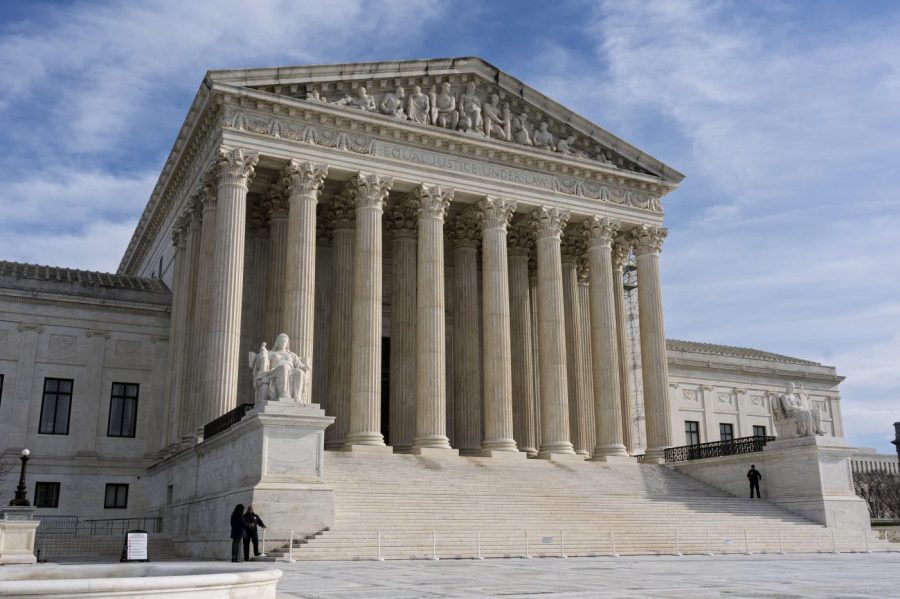
A routine traffic stop in Texas turned deadly within seconds when a police officer shot and killed 24-year-old Ashtian Barnes in 2016.
The Supreme Court weighed Monday whether courts should examine everything that happened during the traffic stop or just the split-seconds when the officer feared for his safety in deciding whether the officer can be tried for unreasonable force.
While driving his girlfriend’s rental car, which had outstanding toll violations, Barnes was stopped by Officer Roberto Felix Jr. and asked to present his license and insurance. Barnes suggested the paperwork may be in his truck and was instructed to get out of the vehicle.
Then, the car started moving forward. Felix jumped onto the vehicle’s door sill and began shooting inside, striking Barnes twice. He bled to death.
The justices were asked to consider how much time should be taken into consideration when police kill people, known as the “moment of the threat” doctrine. They seemed inclined to issue a narrow ruling in favor of Barnes’s mother and estate, punting the case to the lower courts for further litigation, but mixed of their broader argument.
“What’s an officer supposed to do when at a traffic stop and someone pulls away, just let them go?” Justice Brett Kavanaugh asked.
Nathaniel Zelinsky, a lawyer for Barnes’s mother and his estate, argued that Felix could have taken several other steps before drawing his weapon, especially given the nature of the stop.
“We’re not suggesting that somebody should just get away at scot free, but it is unreasonable to use deadly force,” Zelinsky said. “Because what happened was Officer Felix put himself in a position where he had no alternative but to shoot the driver, and that’s unreasonable.
“You have to look at the whole picture, not just the two seconds in which he’s on the car,” he said.
Kavanaugh repeatedly raised concern over the practical challenges ruling against Felix could create for police officers in potentially dangerous situations. He questioned how police would be instructed to react to such incidents if their actions are scrutinized more closely after the case is resolved.
“Someone’s pulling away – it might be they just don’t feel like they want to be hassled for a traffic violation, but they could be, you know, about to drive down the street in New Orleans,” he said, alluding to the terrorist attack on New Years Day.
Charles McCloud, who represented Felix, argued that it is reasonable for officers to use force whenever confronted by a threat to his safety or that of others.
“At the moment Sgt. Felix used force, he was clinging to the side of a fleeing suspect’s car, and Felix reasonably believed that his life was in imminent danger,” McCloud said. “That conclusion should end this case.”
Justice Elena Kagan said the issue at hand is much narrower, pointing to both lower courts’ “desire to look beyond two seconds” but determinations they could not.
“That suggests to me that there’s an easy way of just vacating and remanding and giving it back to the courts below to address,” she said.
The U.S. Court of Appeals for the Fifth Circuit ruled that Barnes’s Fourth Amendment rights were not violated under the appellate court’s precedent, which abides by the “moment of the threat” doctrine.
But in a concurring decision, Judge Patrick Higginbotham – who himself wrote the majority opinion – argued that the Fifth Circuit’s precedent is wrong, and the justices should overturn it.
“Here, given the rapid sequence of events and Officer Felix’s role in drawing his weapon and jumping on the running board, the totality of the circumstances merits finding that Officer Felix violated Barnes’s Fourth Amendment right to be free from excessive force,” Higginbotham wrote, suggesting he felt constrained to consider only the seconds before the shooting.
Justice Neil Gorsuch said the court could clarify that the “two-second rule” used by the lower courts is not law and send it back for further litigation, but McCloud claimed sending it back would be “pointless.”
“The number of remands from this court that the lawyers tell us are pointless could fill volumes,” Gorsuch said, drawing laughter from the gallery. “Any other objections?”
McCloud then said it could create a dangerous precedent endorsing an argument of “officer-created danger,” which Gorsuch called a “fair concern.”
Lanora Pettit, who represented Texas, later agreed with McCloud that remanding the case would be “unnecessary.” The government took no position on the facts of the case but said has an interest in correcting the Fifth Circuit’s “legal error.”
A decision is expected this summer.

